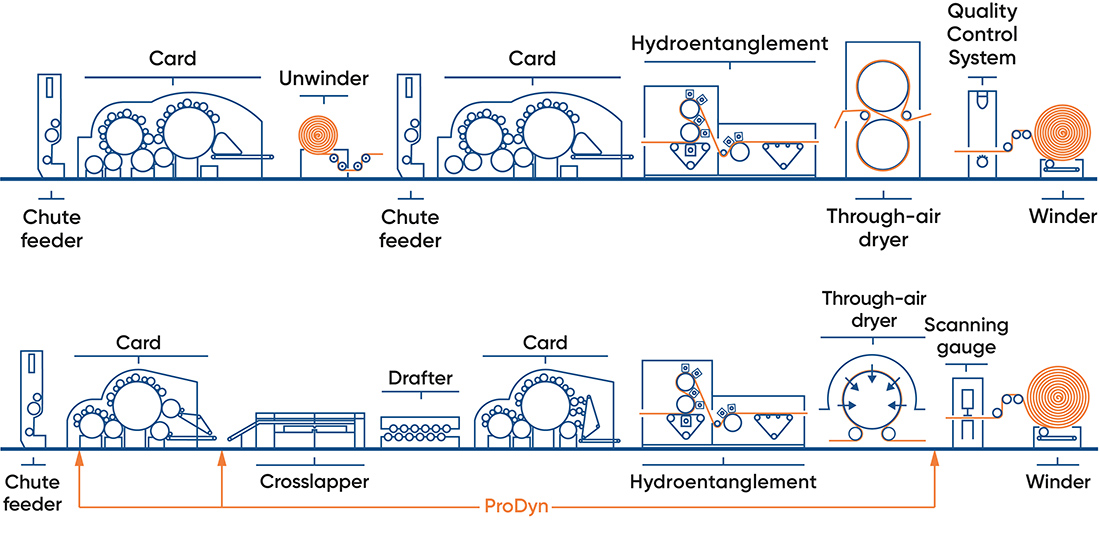Hydroentanglement (sometimes referred to as spunlacing) is a bonding process used in the manufacture of nonwoven materials. It can be employed with either carded, wetlaid webbed, or drylaid webbed fibers.
Hydroentanglement systems utilize rows of highly pressurized water jets to impinge on the fiber web and twist fibers around each other. The higher the pressure of the water as it comes in contact with the fibrous material, the more the fibers will become entangled. High-pressure water can also fracture the fibers, resulting in the formation of micro and nanofibers. A higher rate of entanglement mixed with the occurrence of micro and nanofibers makes for a stronger material, which can be desirable for certain applications. However, a fine balance is required, and too much pressure can fracture the fibers to a point that the overall material is degraded and/or loses the desired functional characteristics.
While hydroentanglement is advantageous because it requires no binder, adhesives or surface modifiers to produce a high-strength, soft, and highly absorbent nonwoven material, the materials it produces generally have poor strain recovery and surface abrasion resistance, and they are not particularly wash durable.
Additional material:
- “Hydroentanglement Bonding Process for Production of Nonwoven Fabric (Part 1),” Textile Learner, Mohamed Elsharkawy, Dept. of Textile Engineering, Alexandria University, https://textilelearner.blogspot.com/2014/12/hydroentanglement-bonding-process-part-1.html.
- “An Examination of the Hydroentangling Process Variables,” JEFF Journal, A. M. Seyam, and D. A. Shiffler, College of Textiles, North Carolina State University, Raleigh NC; and H. Zheng, Goulston Technologies, Monroe, NC, https://www.jeffjournal.org/INJ/inj05_1/p25-33.pdf.
- “TT 405 L6: Hydroentangling,” Quizlet, https://quizlet.com/85751073/tt-405-l6-hydroentangling-flash-cards/.


